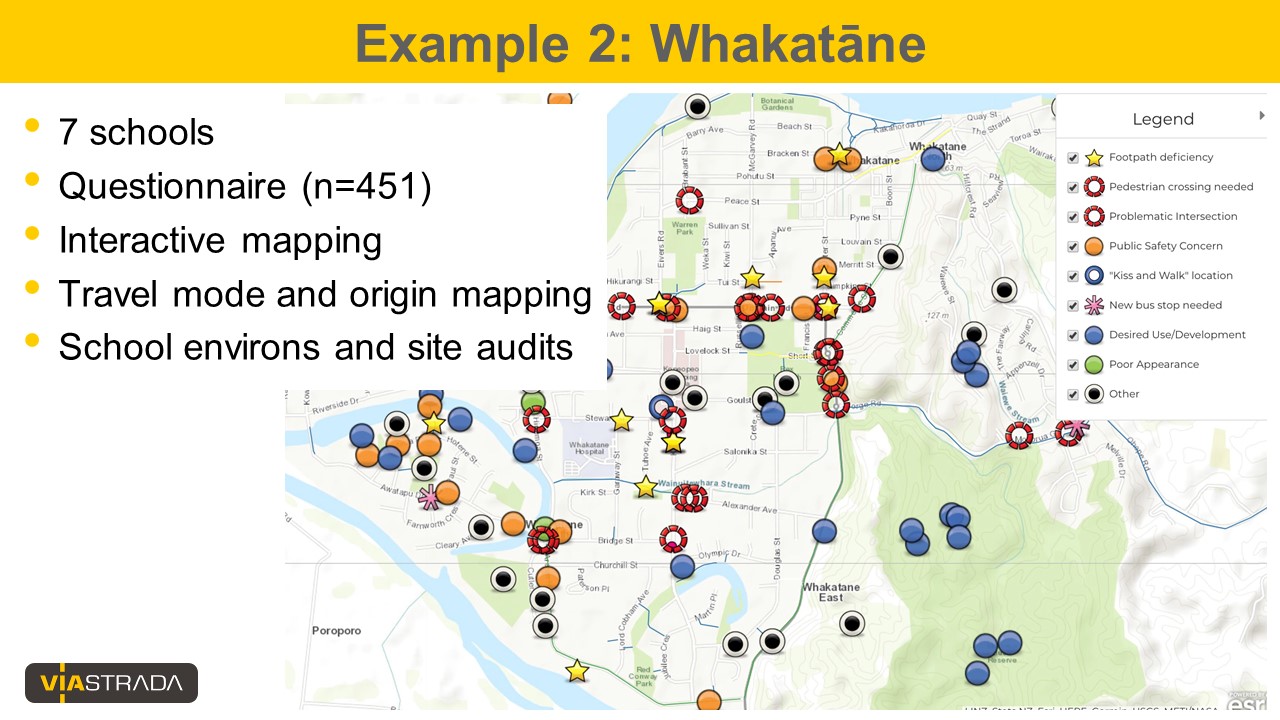Evolving methods in school travel planning
Where presented / published:
The Active Living and Environment Symposium, Dunedin, 12 February 2019
Background: As an off-shoot of Travel Demand Management (TDM), school travel plans (STPs) have been around since at least 2005 in the United States, Canada and the UK. The general aim of STPs is to improve the range of transport choices for students and therefore their health, learning, and safety at the school gate.
Description: The author’s experience with the rigorously prescribed process in California as well as nine plans in Hastings District, three in Palmerston North, and school travel planning activities in Whakatāne District have shown that having a flexible approach helps maximise the achievement of outcomes. Robust evaluation is necessary to quantify the benefits of investing in STPs and help communicate these benefits to prospective schools. This paper will document the evolution in practice from 2013 to 2018 and highlight the most successful aspects from each community the author has worked in.
Lessons learned: Sticking to a template can save time, but also stifle the opportunity for schools to be more active participants. As with any community engagement activity, the STP process needs to be eye-catching and easy to navigate – a text heavy plan may be ideal for the council staff who need to back up a report to council but is less accessible to parents and school administrators. Simple brochures and maps are the most commonly requested outputs.
Conclusions: The most important finding is that the STP process itself can be the seed of a more productive collaboration between council staff, school administrators, board members, and parents. There is an opportunity to tie the development of an STP to road safety and infrastructure funding.
The conference presentation is available from our website.





